So here's two pennies to leave off for a while. There's something
left, something more bizarre. Is Shane MacGowan still alive? Is
he? I heard he's been seen tied to a microphone stand recently giving
another ghostly performance.
Tommy Makem once complained that
Shane MacGowan and The Pogues were the greatest
disaster ever hit to Irish music: They re-invented the irresponsible
drunken Irishman and managed to do more damage to Irish culture than Mrs
Thatcher and the British government ever could. Tim Bradford wouldn't agree.
"The Brits have been jealous of the Irish for centuries
because of their ability to drink, their nice singing voices, their
straight-armed dancing style (which is so much sexier than Morris
dancing) ..."
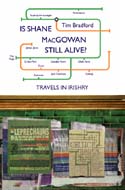 Tim had his first experience of Irishness at the Hammersmith Irish
Centre
Tim had his first experience of Irishness at the Hammersmith Irish
Centre
"A bloke who looked like Gerry Adams, President of
Sinn Fein, was sat at a
table. When a jig came on, Gerry started dancing. I wonder what he's
doing here. I'm not sure what the hard-liners of the IRA would think if
they could see him now. Still, I bet he can dance better than Ian Paisley."
Where's the real crack? Tim sets off to an oddyssey across the
Emerald Isle. A leprechaun by his side (here we are again), squeaking When Irish Eyes Are
Smiling when you press his belly, he gets his first deadly
experience in Viking
Town:
"Downstairs in the '24-hour bar' a dreadful
singer/accordion player is murdering a few classic tunes - 'Rivahhhssss
roon freeeeeeeeehhhhhhrrr', 'Dirrdi ooooooohl taaaaaaaaahhhhhhhhhn',
'Fffffeeeeeeellllzzzzz ovathenraaaiiiiiiiiiiiiii' etc.,
etc."
Is Irish Music Any
Good?
"You suddenly hear this beautiful bazouki
playing and for some reason you can never understand, you just want to
dance like that preening idiot in Riverdance (you know, the
one with the blond quiff and the vaselined chest who went off in a huff
because his name was only fifteen feet high on the posters and he'd
categorically stated they had to be fifteen feet and four inches). But
it's especially about those times when you are sitting in a pub in
Doolin and a little old bloke with a red leathery face gets up and, in a
high-pitched, wheezy voice, sings some ancient ballad about sea,
existential angst and death (and he looks so rough it seems as though
it's the last thing he'll ever sing) ..."
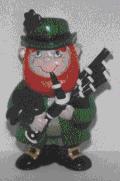
What does he hope to
find? Crocks of gold at the end of the rainbow? - It's three a clock in
the morning. To give Shane the last word: Now the song is nearly
over. We may not find out what it means ... As the light turns off,
my sweet dreams circle around a bagpiping leprechaun playing When Irish Eyes Are
Smiling. What a horrible nightmare! So good night and bless you
all, T:-)M.
Bradford, Tim, Is Shane MacGowan Still Alive? Travels in
Irishry.
Flamingo/HarperCollins,
London, 2000, ISBN 000-655168-8, Paperback, 316 pp, UK£6.99.
Carson, Ciaran, Irish Traditional Music. Appletree Press, Belfast, 1986, ISBN
0-86281-168-6, Paperback, 72 pp, IR£3.99.
Cheape, Hugh, The
Book of the Bagpipe. Appletree Press, Belfast, 1999, ISBN
0-86281-706-4, Hardcover, 80 pp, IR£7.99.
Mahon, Brid, While
Green Grass Grows. Memoirs of a Folklorist. Mercier Press, Cork, 1998, ISBN
1-85635-206-4, Paperback, 208 pp, IR£8.99.
McCarthy, Marie,
Passing it on. The Transmission of Music in Irish Culture.
Cork University Press,
Cork, 1999, ISBN 1-85918-179-1, Paperback, 311 pp, IR£15.95 (Hardback,
ISBN 1 85918 178 3, IR£45.00).
O'Donoghue, David, Hitler's
Irish Voices. The Story of German Radio's Wartime Irish
Service. Beyond the Pale
Publications, Belfast, 1998, ISBN 1-900960-04-4, Paperback, 236 pp,
IR£7.95.
Back to the content of FolkWorld
Articles, Live Reviews & Columns
To the content of FolkWorld
online magazine Nr. 19
© The Mollis - Editors
of FolkWorld; Published 8/2001
All material published in FolkWorld is © The
Author via FolkWorld. Storage for private use is allowed and welcome. Reviews
and extracts of up to 200 words may be freely quoted and reproduced, if source
and author are acknowledged. For any other reproduction please ask the Editors
for permission.
FolkWorld - Home of European Music

Layout & Idea of FolkWorld © The
Mollis - Editors of FolkWorld
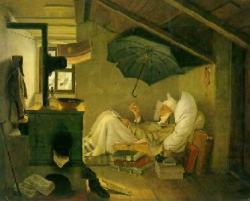 At
the bedside table there's another couple of books. Big books, small
books, a jiggling pillar bound to be pulled down by gravity. Song sheets
and instrument tutors are spread across the floor, tunes waiting to be
incorporated into the repertoire. Who writes all that stuff? Who
publishes? Who prints? Who buys? Who reads? Who cares? Who can tell? -
O.k. let us read!
At
the bedside table there's another couple of books. Big books, small
books, a jiggling pillar bound to be pulled down by gravity. Song sheets
and instrument tutors are spread across the floor, tunes waiting to be
incorporated into the repertoire. Who writes all that stuff? Who
publishes? Who prints? Who buys? Who reads? Who cares? Who can tell? -
O.k. let us read! Collecting folklore is one thing. How it has survived and been passed on and
on is another. But that's a more academic question.
Collecting folklore is one thing. How it has survived and been passed on and
on is another. But that's a more academic question.
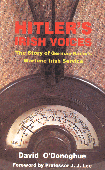
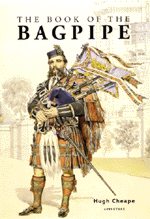 The Book of the Bagpipe has been published by
The Book of the Bagpipe has been published by  Tim had his first experience of Irishness at the Hammersmith Irish
Centre
Tim had his first experience of Irishness at the Hammersmith Irish
Centre
